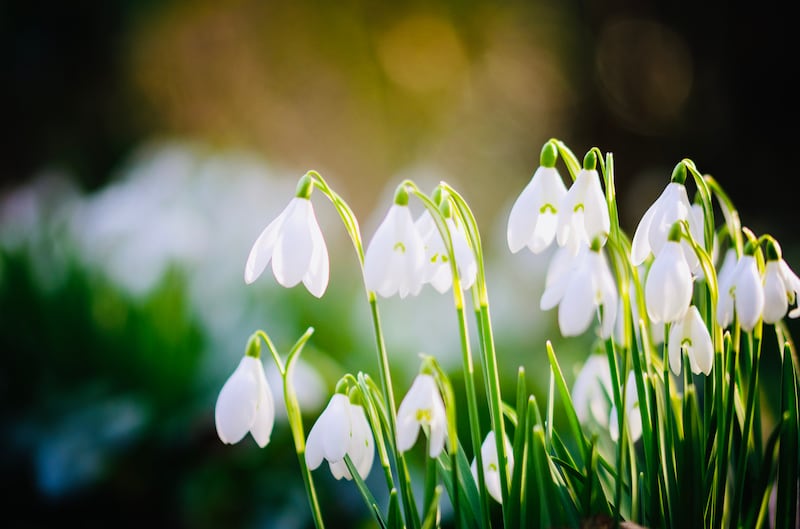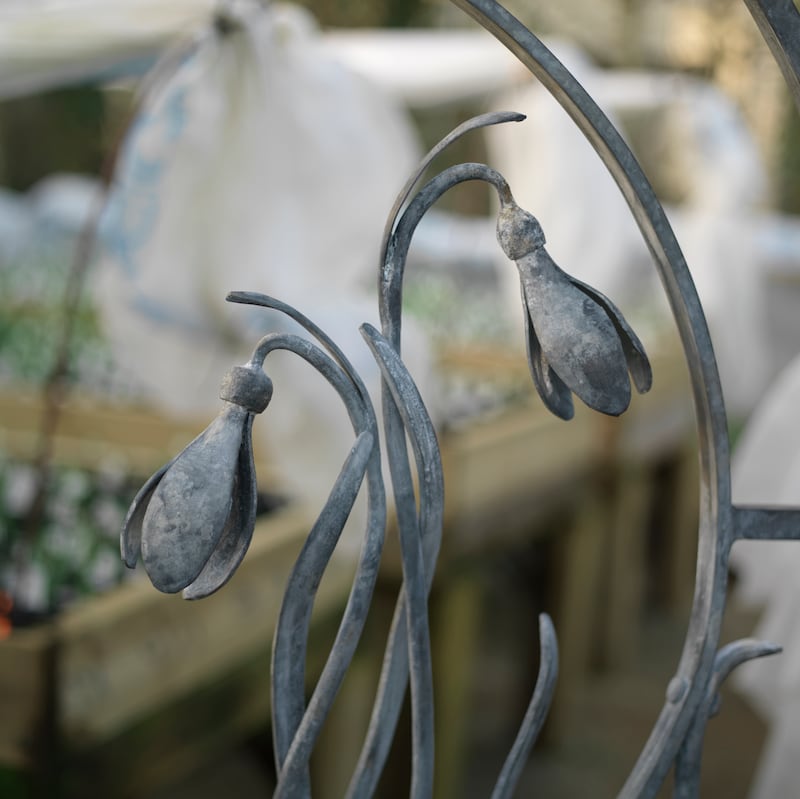It’s fair to say that Robert Miller, the gardener, nurseryman and owner of the absolute treasure-trove of a garden-centre that is Altamont Plants in Co Carlow, has a bit of a thing about snowdrops. Show him a blurry phone shot of one of the many thousands of cultivars available, for example, and if it’s in any way garden-worthy he can instantly give its varietal name as well as a concise precis of its outstanding qualities.
Ask him to name five superior varieties that he would recommend for a beginner and he’ll quickly rattle off a shortlist of those he considers to be distinctive, vigorous, easy-to-grow, floriferous and worthy of a place in any collection, along with a brief dissertation on those that aren’t.
Quiz him on the dark arts of “chipping” and “twin-scaling” – two complex methods of propagation where the small, fleshy bulb of the snowdrop plant is surgically sliced (known as “axial incisions”) into tiny vertical sections known as “propagules” as a way of quickly bulking up stock of valuable varieties – and he will knowledgeably explain the pros and the cons.
This is a gardener who can spot an outstanding variety of snowdrop at 10 paces, whose idea of fun is to spend a chilly February day on his knees outdoors and who can – of course he can – demonstrate with ease the importance of the “snowdrop squeeze”, where the unopened flower is softly pinched between thumb and forefinger to expose its all-important inner markings.
The last of these, by the way, can ostensibly be the crucial difference between a variety worth many hundreds of euro and one at which specialist growers – or galanthophiles, to give them their proper name – will wrinkle up their noses.

Take Galanthus elwesii ‘Grumpy’, for example, where the distinctive marking of its inner tepals – two green spots above an inverted V – give the cartoonishly Eeyore-ish impression of a frowning face. It was discovered several decades ago growing in a garden in Cambridge and is considered a must-have.
Colour matters, too. Varieties with gold-splashed petals, golden ovaries and even golden stems have particularly caught the eye of serious snowdrop collectors in recent years, of which the best known is probably Galanthus plicatus ‘Wendy’s Gold’. It was discovered back in the late 1970s and belongs to an elite group that includes the yellow-ovaried Galanthus ‘Primrose Warburg’; the doubled-flowered Galanthus ‘Lady Elphinstone’; and more recently Galanthus plicatus ‘Golden Tears’, bred by Monksilver Nursery in the UK, a single bulb of which sold at auction in 2022 for a record £1,890.
Other highly desirable varieties, such as Galanthus ‘Fly Fishing’, stand out for the unusually extended length of the flower stem or pedicel, as it’s more properly known, with large, dangling flowers that gracefully bob in the slightest breeze.
This particular snowdrop was introduced into cultivation in 2012 by the late Alan Street, head nurseryman of Avon Bulbs in the UK and a legendary figure in the international world of snowdrop collecting. Street joined the nursery as a young man in the early 1980s and remained with it through several changes of ownership until his death in 2022 at the relatively young age of 65. A brilliant propagator and plantsman with a famously encyclopedic memory, his eye for a great snowdrop couldn’t be bettered. After his sad passing, the owner of Avon Bulbs, Chris Ireland-Jones, subsequently made the decision to retire. Which is where Richard Miller rejoins the story.

Before Brexit put paid to such things, the Somerset-based nursery used to bring a selection of its stock of plants over to Ireland specially for the annual Snowdrop Gala, held each year in early spring at Altamont and nearby Ballykealey Manor by Miller and fellow Irish galanthophile Hester Forde of Coosheen Garden in Cork. After Brexit, Miller began what became his annual pilgrimage to the UK to bring back a choice selection of Avon’s snowdrops ahead of the gala. So when rumours reached him in autumn 2023 that Avon’s catalogue of snowdrops was possibly up for sale, he decided to reach out to Chris Ireland-Jones to discuss the possibilities. Fast-forward to late last summer when Miller officially took on proud ownership of half of that famed collection (the other half was bought by the new owner of Avon Bulbs).
Its lineage – there are about 600 distinct varieties, including about 150 that are new to Miller – stretches right back in time, connecting Altamont Plants to many of the great names in the world of gardening and snowdrop-hunting. It includes vigorous hybrid varieties of snowdrops with golden markings (deliberate crosses between different species) originally bred by Anne Wright of Dryad’s Nursery and now known as the Dryad Gold Group. Others now also happily ensconced in Miller’s garden centre and nursery in Altamont’s walled garden were bred or discovered by Wol and Sue Staines of the specialist English nursery Glen Chantry. Also included are botanical curiosities such as Galanthus elwesii ‘Godfrey Owen’, an outstanding variety notable for having six rather than three outer petals and named after the husband of the Shropshire gardener who first discovered it.
Housed in a series of specially constructed, raised timber beds within a beautifully gated section of Altamont’s walled garden, it makes for a wonderful horticultural menagerie. Already the orders for choice varieties are coming in from all four corners of Ireland. No doubt the many snowdrop lovers that visit Altamont in the coming weeks as part of its celebrations for snowdrop month will be enthralled. Even those yet to be bitten by the galanthophile bug will find much within this historic garden to charm them. As for those considering starting their own snowdrop collection, Miller’s top five varieties for beginner galanthophiles are: Galanthus ‘Drummond’s Giant’; G. ‘John Gray’; G. ‘Magnet’; G. ‘S. Arnott’; and the aforementioned G. ‘Fly Fishing’. But just be warned that it could be the start of a lifelong addiction.
This week in the garden
Glasshouses and polytunnels should be washed down before the start of the growing season to minimise the risk of overwintering pests and diseases as well as to optimise heat and light levels. Use warm water, a long-handled soft brush and a sponge to avoid accidentally scratching the glass or plastic.
Garlic can be planted in the kitchen garden or allotment this month to give a crop ready for harvesting in late summer. Plant the individual cloves shallowly in a sunny spot and into firm, fertile, free-draining soil enriched with some slow-release fertiliser and a little home-made compost. Varieties suitable for planting in February include ‘Vallelado’, ‘Printanor’ and ‘Cledor’.
Dates for your diary
Snowdrop Month at Altamont Gardens, Ballon, Co Carlow February 1st-28th (9.30am-4pm, with daily guided tours (Monday-Friday, 2pm) or group tours by prior arrangement. Other Irish gardens with outstanding collections of snowdrops opening to the public in February include Burtown House, Huntington Castle, Shankill Castle, Hunting Brook, Bellefield, Blarney Castle, Kilmacurragh, Ballyrobert, Coosheen and Primrose Hill. Opening times vary.















